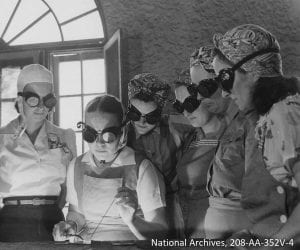Conditional cash transfer (CCT) programs are extremely fast growing policies aimed towards reducing poverty in low- and middle-income countries around the world. Despite differences in their exact design, CCT programs provide cash payments to poor households meeting certain requirements, with the immediate goal of improving the health and education of underprivileged children and the long-term hope of breaking the generational poverty trap.
In India, many CCT programs focus specifically on girls in the hope to transform gender-based bias, specifically changing the parents’ view of daughters as a burden. The participating families in these programs receive payments each time their daughter achieves one of several objectives: registering her birth, immunization, enrolling and going to school, and ensuring she remains unmarried until the age of 18, among others.
Last week, the United Nations Population Fund (UNFPA) released a study on India’s CCT programs seeking to shed light on their impact in reducing discrimination against girls by shifting attitudes about having daughters and eliminating what they call “son preference.”
The Consequences of Son Preference
Son preference is a tradition rooted in gender inequality existing in many countries and found within various religions and classes. It often occurs where poverty is prevalent and where families might view the continuity of the male line as a matter of particular importance for varying reasons. When son preference is dominant, it can result in damaging impacts including pre-natal sex selection, high mortality of girls, and child marriage, skewing sex ratios and causing high fertility rates.
In the case of India, son preference takes many forms. It causes many families to marry daughters off at a young age, with a staggering 47 percent marrying before 18. These child brides are consistently less likely to be in school and more likely to be victims of sexual and gender-based violence. Additionally, the preference for male children is a major factor in high fertility in India. Some parents choose to have many children in the bid to have at least one son to carry the family name and inherent land and assets. Additionally, where parents want sons, girls often belong to larger families, leaving them at a disadvantage when family resources are spread thinly across many children.
In order to reduce gender-biased sex selection, there is a must for increasing the social and economic value of girls and empowering them to stay in school, get jobs and contribute to their families and communities, which ultimately have implications for the enhancement of women’s status and fertility reduction.
Investing in Daughters
According to UNFPA’s study, India’s conditional cash transfer schemes play a part in doing just that. The programs are currently providing at least one million girls with financial support. The findings suggest that parents who received these CCT funds were less likely to view their daughters as a burden and more willing to delay the girls’ marriage and keep them enrolled in school.
It showed that policies aimed at challenging the perception that sons are more valuable than daughters can have great social benefits, as well as reduce the population growth rate. CCT programs are, of course, not a cure-all. The study suggests that while cash incentives may help transform girls’ futures by reducing discrimination through vulnerable stages of life, broader equality will require additional interventions. However, CCTs are a great step towards changing attitudes about the value of females and allowing positive implications to follow.
Engage your secondary students in global gender issues with the activity A Girl’s Life. Using photo essays of girls around the world, the activity helps students understand the challenges for girls in several developing countries as they relate to education, work, motherhood and more.




